To accompany your Come Follow Me study for January 3-9
In addition to reading these chapters you may want to:
- See the video New Media Bible Genesis Project – 01 The Creation at https://www.youtube.com/watch?v=tncNTHeabmI&list=PLHdHfiwn51u7X7wLjeL_8E2L-11jkm77I&index=1
- See the video “The Sabbath is a Delight” at https://www.youtube.com/watch?v=g-rJ7k_QFAQ
- See the video Come Follow Me LDS 2022 (Jan 3-9) Genesis 1-2; Moses 2-3 & Abraham 4-5 In The Beginning at https://www.youtube.com/watch?v=5w6Hp388zt0
- See the study aids for this lesson at Book of Mormon Central at https://bookofmormoncentral.org/come-follow-me/old-testament/come-follow-me-2022-genesis-1-2-moses-2-3-abraham-4-5
If you would like a Kahoot game related to this material which you could use for personal study or use with your family or your class, click here: https://create.kahoot.it/share/genesis-1-2-moses-2-3-abraham-4-5/e5f9bc6d-0a6b-4481-83db-1cabbdcf307d
Points to Ponder in Genesis 1-2, Moses 2-3, and Abraham 4-5
1. Where did Moses and Abraham each get their information concerning the creation, since neither was an eyewitness?
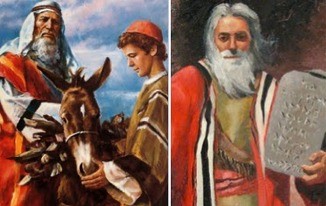
2. What personally convinces you that God created the earth and life upon it, and that man is not here by chance?

3. Though Latter-day Saints are the only Christians who believe in a premortal life for all mankind, what passage in Genesis quite clearly implies it?
4. What difference does it make to us to know that all life had a pre-mortal spirit life?
5. What significant differences do you see between the creation story in Abraham and those in Moses and Genesis?
6. How does the Latter-day Saint understanding of the creation differ from that of other Christians?
7. What significance do you see in the fact that the creation was divided into “days” (or “times” in Abraham)?
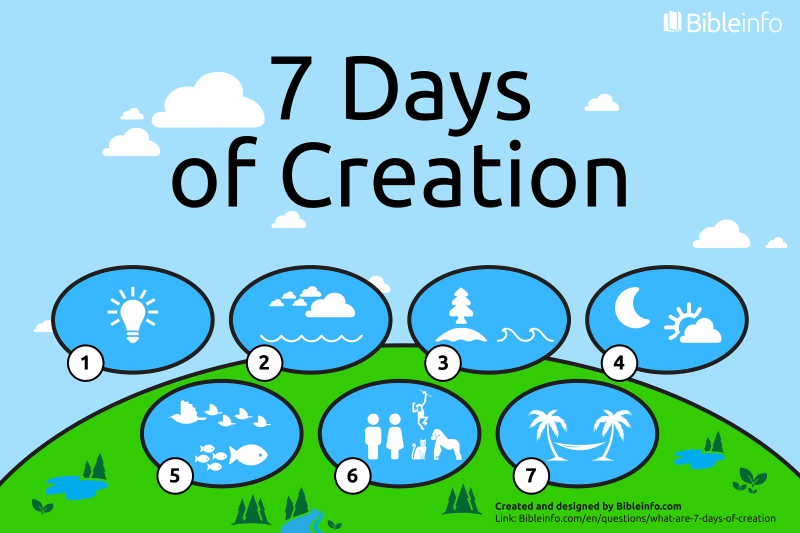
8. What do the scriptures have to say about the age of the earth?

9. Conventional wisdom proposes that the sun and earth both originated in a “big bang” explosion, with the sun now being about 4.57 billion years old and the earth about 4.54 years old, but the scriptures have the earth created on the first “day” and the sun on the fourth “day.” How can we reconcile this?
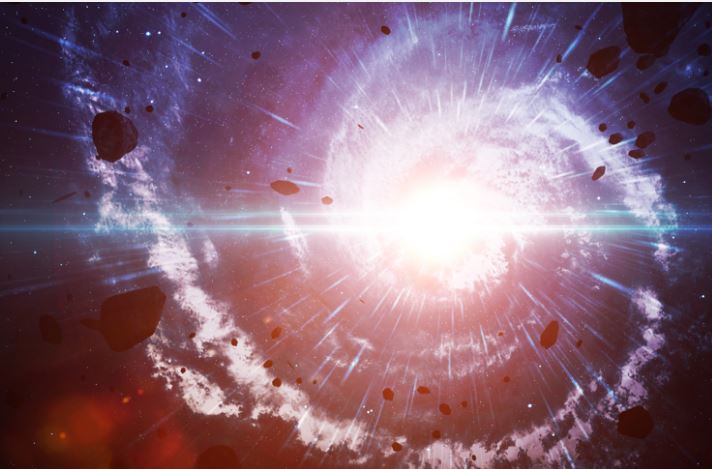
10. Since plants require sunlight for growth, how could there have been plant life on the earth on the third day, when the sun wasn’t created until the fourth day?

11. What significance do you see in the fact that life was put on the earth in order of simple to complex?
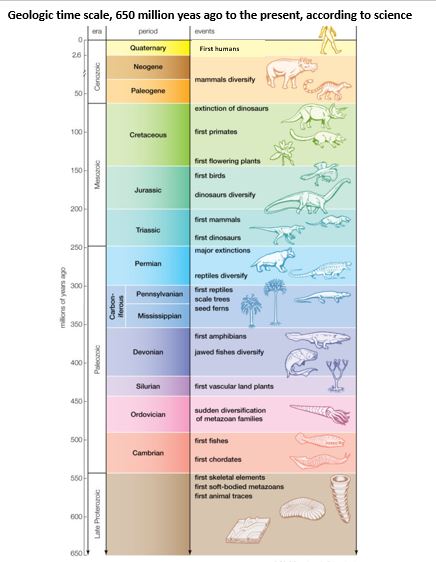
12. What significance do you see in the Lord’s decree that all living things were to reproduce after their kind?

13. What does it mean in 3:19 that God formed the animals “out of the ground”? Wouldn’t it have been simpler to bring a pair of each species from elsewhere in the universe to get things started?
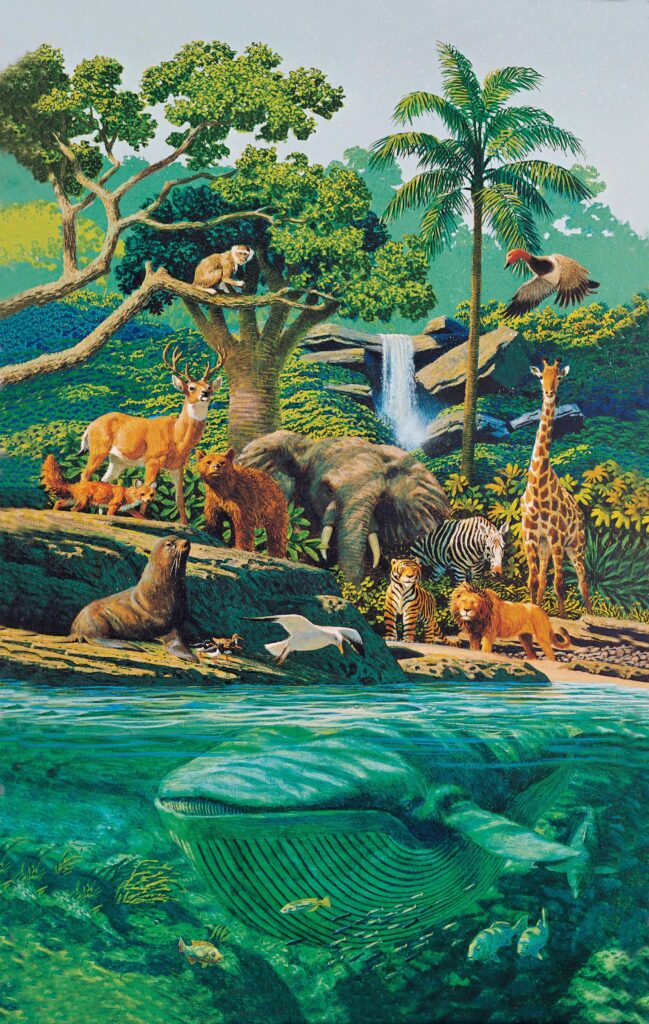
14. Of what did the Lord intend man’s “dominion” over the animal kingdom to consist?

15. Why does the Moses 3 account have the animals created before Eve, while Ab. 5 reverses the order? Which do you believe is correct? Why?
16. Since God had created man and woman in Moses 2:27, why did he have to do it all over again in 3:7? Is one account a spiritual creation and the other a physical creation? Is one just a plan and the other the actual creation? Are these two different accounts by different authors, as biblical critics suggest?
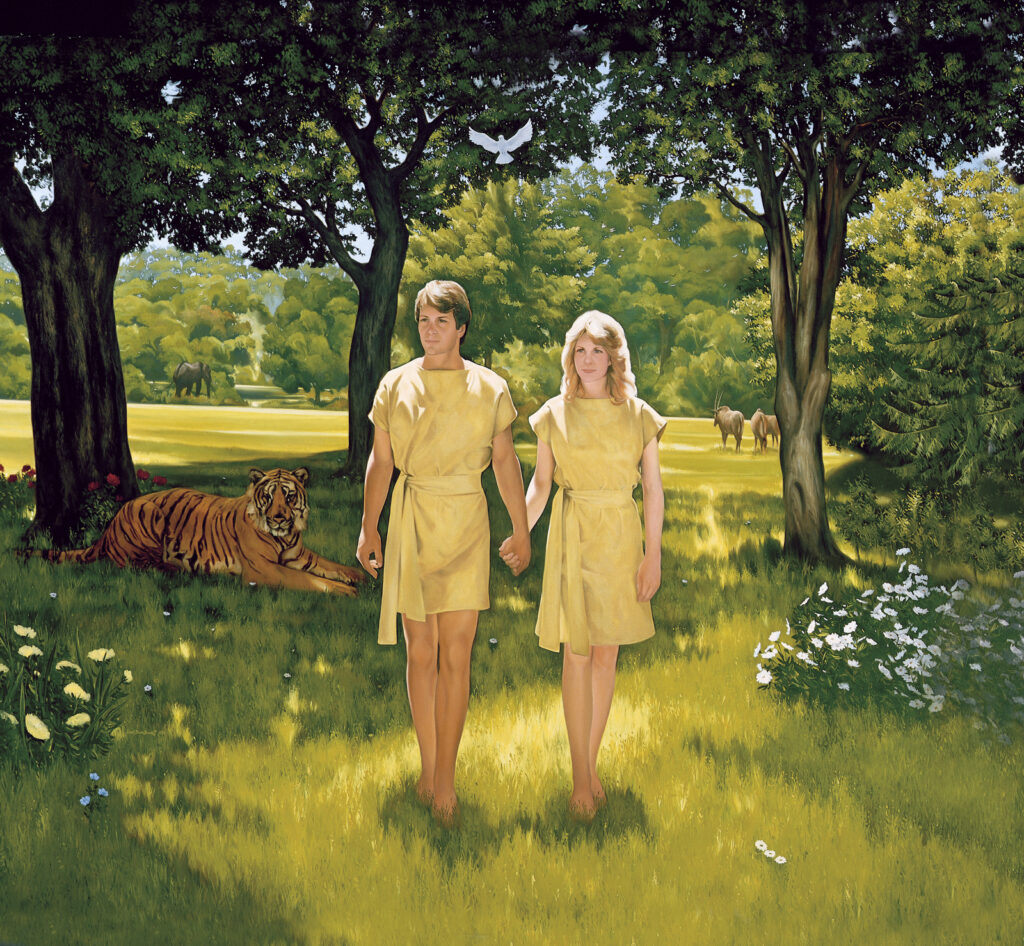
17. Was man created on the 6th or 7th day?
18. How could man be the “first flesh” upon the earth (3:7), when Moses 2 pictures him as the last thing created?
19. What four letter adjective is used six times in Genesis 1 to describe each phase of the creation? How many times is the same word used in Moses 2-3? What significance do you see in its use?
20. What did God say following the creation of man that He isn’t recorded as saying after any of his other creations?
21. How could you respond if someone taught in Sunday School that it was evident that there were people on the earth before Adam, since Genesis 1:28 as well as Moses 2:28 and Abraham 4:28 teaches that Adam and Eve were to “replenish” the earth, which term implies that it had been populated before?
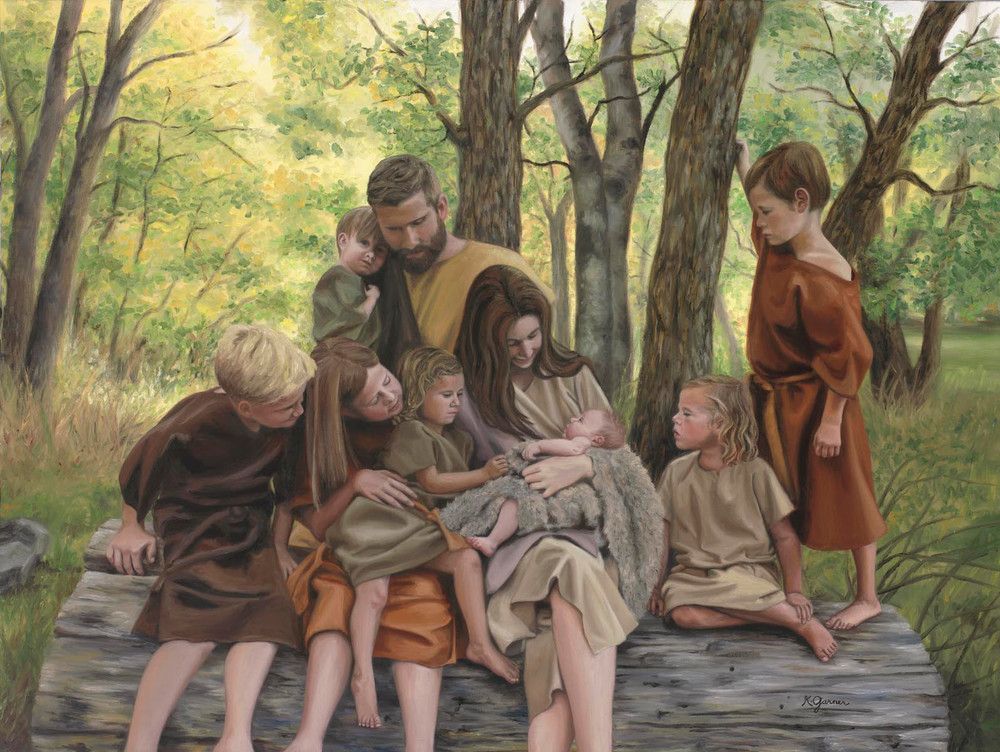
22. What evidence do you see in these chapters that the Lord is concerned with aesthetics?
23. What is the difference between a “spirit” creation and a “spiritual” creation? How could Adam and Eve eat “spiritual” fruit?
24. If the Garden of Eden was in the area of Ethiopia and the Euphrates, as Moses 3:13-14 says, how could Joseph Smith say it was in Missouri?

25. What basic principles of proper marriage and family life do we learn from this week’s reading?

26. How literally are we supposed to take the rib story?
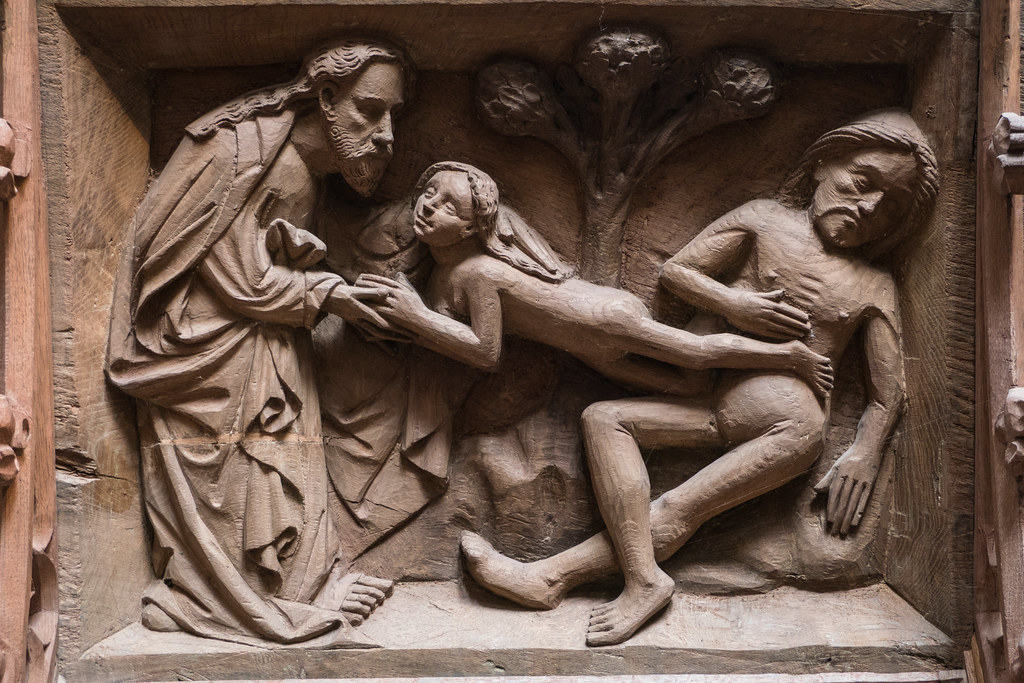
27. What in this week’s reading suggests there is more than one divine being in heaven who merits the title of “God,” contrary to what virtually all Christians other than Latter-day Saints believe?
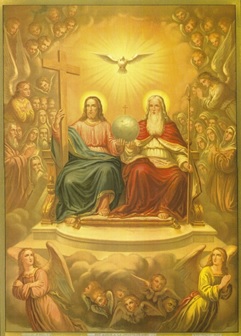
28. Why would Luke, in tracing Christ’s genealogy in a lineal descent from Adam, call Adam a son of God?
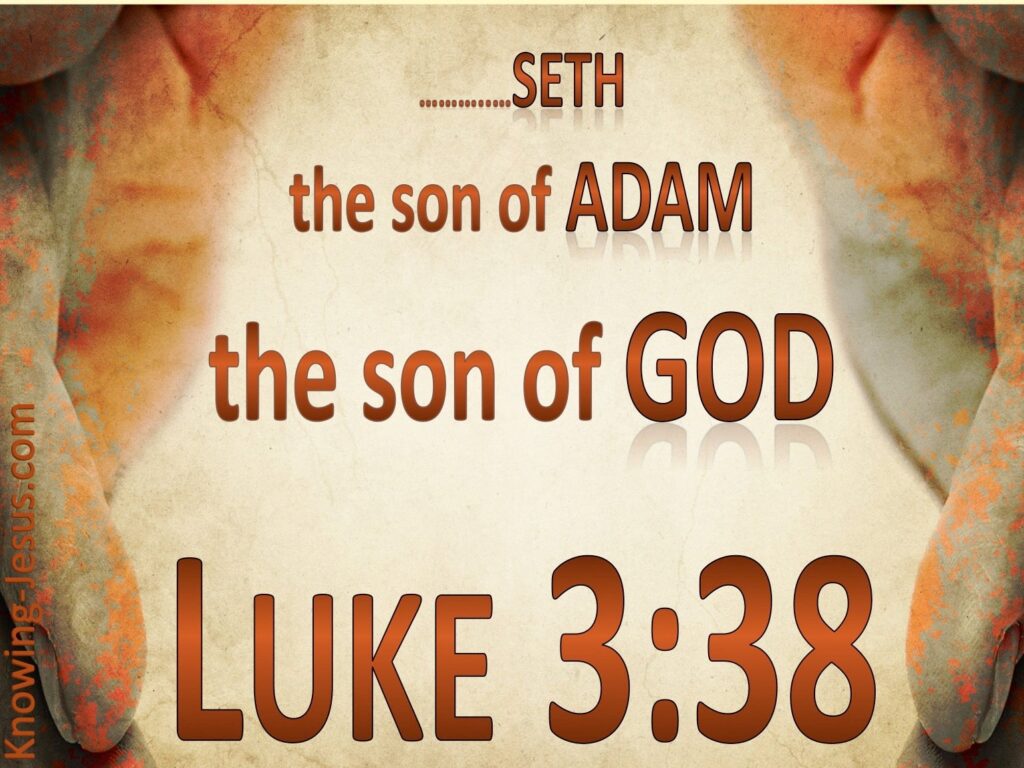
29. What do you believe the Lord wants us to clearly understand about the creation? What do you think He doesn’t care so much if we understand it or not?
Possible answers to Points to Ponder in Genesis 1-2, Moses 2-3, and Abraham 4-5
1. Where did Moses and Abraham each get their information concerning the creation, since neither was an eyewitness?
Moses: revelation (Moses 2:1); Abraham: records (Ab. 1:28, 31) and perhaps the Urim and Thummim (Ab. 3:1).
2. What personally convinces you that God created the earth and life upon it, and that man is not here by chance?
Your choice. I personally find three convincing pieces of evidence, which are essentially the same as Alma cited to Korihor: (1) the complexity and order in the universe, (2) the testimony of prophets, and (3) the personal witness of the Spirit.
3. Though Latter-day Saints are the only Christians who believe in a premortal life for all mankind, what passage in Genesis quite clearly implies it?
Genesis 2:4-5 clearly states that God made “every plant of the field before it was in the earth, and every herb of the field before it grew.” If even plants had a pre-mortal existence, it seems only logical that animals, including humans, did as well.
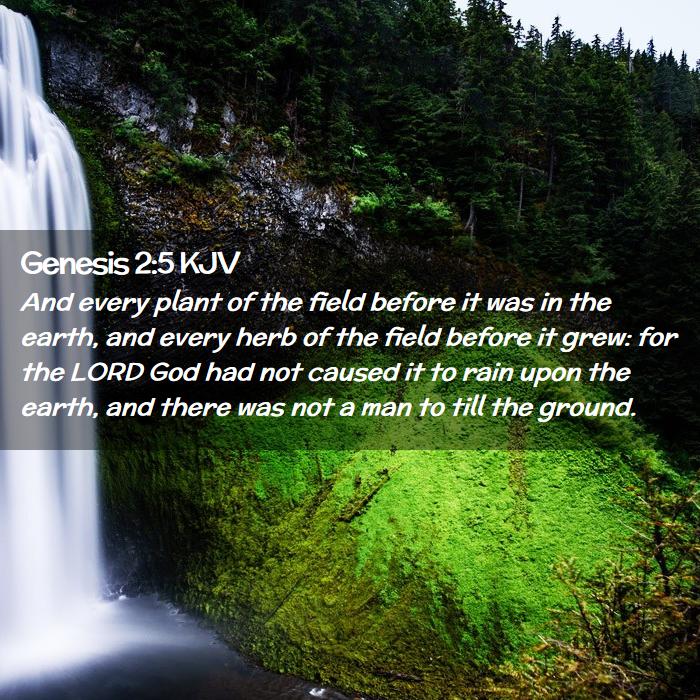
4. What difference does it make to us to know that all life had a pre-mortal spirit life?
To know that we lived before we were born as literal children of God helps us understand that we are of importance to God and have divine potential, that we were among the noble and great in a pre-earth life, and were foreordained to important missions here. It gives us motivation to try to live up to what we were before we came. To know that even animals and plans had a pre-mortal creation tends to promote a greater reverence and respect for all life, realizing that every living thing is eternal. A pre-mortal life implies a post-mortal life, of course. If one kicks a dog, someday in eternity he may meet that dog again!
5. What significant differences do you see between the creation story in Abraham and those in Moses and Genesis?
Abraham’s contributions include:
- The earth was originally “empty and desolate” rather than “without form and void.”
- The word “time” rather than “day” is used for the creative periods.
- Abraham indicates that should Adam eat of the forbidden fruit, he would die “in the time thou eatest thereof,” which time “was after the time of Kolob”—perhaps implying within a 1,000 year period. (5:12-13)
- Abraham suggests that the seven periods of time were times of planning and preparation rather than actual creation, except in the case of the creation of man himself.
- Abraham mentions the creation of woman prior to creation of the animals. Genesis and Moses reverse the order.
- Ab. 4:12 is clearer that plants could only bring forth after their kind.
- 4:28 is presented as a divine plan rather than a command to Adam and Eve
- Abraham says “expanse” rather than “firmament” (4:6-8)
- Abraham uses the term “organized” in place of “created”
- 4:30 says “green” herb, as does Genesis 1:30, rather than “clean” herb, as Moses 2:30 does.
- Moses has God speaking in the first person, whereas Abraham refers to God in the third person
6. How does the Latter-day Saint understanding of the creation differ from that of other Christians?
- We understand that all life had a spirit creation prior to its physical creation.
- We believe that God did not create the world nor the universe from nothing but organized eternally existing matter.
- We do not believe the earth was created in seven days of twenty-four hours each but during seven periods of undefined length.
- We believe that multiple “gods” participated in the creation.
- We believe that man was literally created in the image of God, who also has a body of flesh and bones.
7. What significance do you see in the fact that the creation was divided into “days” (or “times” in Abraham)?
Perhaps it is a model for us of how to break big tasks down into manageable smaller parts. Perhaps it can help us be patient in recognizing that it takes time to accomplish important things. For instance, perfection is a goal rather than an immediate expectation.
8. What do the scriptures have to say about the age of the earth?
Very little. The substitution of “time” for “day” in Abraham and the fact these “times” were measured before the earth had its current relationship to the sun makes clear that the days needn’t be confined to twenty-four hours. The references in Abraham 3 to the rotation of Kolob and the fact that a thousand “years” on Kolob are equivalent to one day on earth needn’t be interpreted to mean that these were the “days” of creation, though some have taken that view. The word itself in Genesis, which was translated in the King James Version as “day,” means simply an indeterminate period of time.
9. Conventional wisdom proposes that the sun and earth both originated in a “big bang” explosion, with the sun now being about 4.57 billion years old and the earth about 4.54 years old, but the scriptures have the earth created on the first “day” and the sun on the fourth “day.” How can we reconcile this?
The scriptures do not oblige us to believe that the sun was not created until the fourth day but that on that day the earth was brought into its current relationship with it. And since “days” as we now define them are measured by the rotation of the earth on its axis, the word in the scriptural creation story obviously has a different meaning—most likely, as Abraham suggests, simply an undefined period of time.
10. Since plants require sunlight for growth, how could there have been plant life on the earth on the third day, when the sun wasn’t created until the fourth day?
The light emanating from the presence of God, in whose presence the early stages of creation seemingly occurred, would presumably have been more than adequate for plant life. The sun itself, according to D&C 88, receives its light ultimately from the Savior.
11. What significance do you see in the fact that life was put on the earth in order of simple to complex?
Perhaps it leaves open the possibility that the means of creation could parallel some of what evolutionists teach, though occurring with divine direction.
12. What significance do you see in the Lord’s decree that all living things were to reproduce after their kind?
Your choice. It could be argued that this is evidence that the Lord did not use a divinely directed form of evolution in creating life on the earth. Certainly, we have seen little evidence that there is any evolution from species to species, though within species no one questions it.
13. What does it mean in 3:19 that God formed the animals “out of the ground”? Wouldn’t it have been simpler to bring a pair of each species from elsewhere in the universe to get things started?
The two ideas are not mutually exclusive. Our bodies (as well as those of the animals) are composed of earthly element, though the first of each species could well have been imported in the beginning.
14. Of what did the Lord intend man’s “dominion” over the animal kingdom to consist?
It seems clear that the Lord intended man to be the pinnacle of his creation and that the animal kingdom was to be for his use and benefit. However, in keeping with the Savior’s injunction that the greatest should be a servant, it also implies a certain responsibility of mankind for the welfare and happiness of the less competent animals, though allowing for their use as meat and clothing, as needed. Animals do have rights, though subordinate to the needs of man.
For example, the Lord made a coat of skins for Adam and Eve after their expulsion from Eden. After the Flood He gave permission for the eating of animals. However, as the Joseph Smith Translation of Genesis 9 makes clear, the killing of animals for capricious purposes was prohibited. Proverbs 12:10 makes clear that the righteous man would regard the life of his beast. The divine command to have dominion over the earth and subdue it seems to imply that men should have a proper environmental concern to maintain the earth in proper condition. The Lord’s instructions to Adam with regard to the Garden of Eden, for example, were that he was to dress and keep it, not merely exploit it.
15. Why does the Moses 3 account have the animals created before Eve, while Abraham 5 reverses the order? Which do you believe is correct? Why?
Interesting question. There are some things to favor the Abraham account, including the fact that Abraham makes several other apparent “corrections” or clarifications to the Moses account, was revealed to Joseph Smith later than the Moses account, and makes the creation of woman seem less of an afterthought compared to the creation of other forms of life.
16. Since God had created man and woman in Moses 2:27, why did he have to do it all over again in 3:7? Is one account a spiritual creation and the other a physical creation? Is one just a plan and the other the actual creation? Are these two different accounts by different authors, as biblical critics suggest?
If you know for sure the answer to this one, you may be the only one in the Church who does! Liberal Bible critics view these as two separate accounts of the same event, as have many Latter-day Saint scholars. Some Latter-day Saints have viewed chapter 2 as the preparations for the actual placement of life which occurred in chapter 3. The Abraham 4-5 account gives some credence to this theory, as chapter 4 clearly talks about a planning stage, while chapter 5 speaks of the actual creation. Though some have taken the view that the first chapter was a spiritual creation and the second a physical creation, Joseph Fielding Smith was quite adamant that such was not the case and that Moses 3:5, for example, was only an interpolation explaining what had occurred long before.
17. Was man created on the 6th or 7th day?
This is similar to the preceding question. If one views Moses 3:7 as being chronologically after Moses 3:1-3, it would appear that man was created on the seventh day. D&C 77 also seems to take that view. Moses 2, however, has the creation of man on the sixth day. This could either be an error or could indicate that the planning and preparation for the creation of man occurred on the sixth day, followed by his actual creation on the seventh day. It is also possible that the information in Moses 3 and Abraham 5 which makes it appear that the creation of man occurred on the seventh day is simply out of order and that the Lord’s description of the creation was intended to be more topical than chronological. So, you may believe anything you like in answer to this question. There are bound to be many who will agree with you!
18. How could man be the “first flesh” upon the earth (3:7), when Moses 2 pictures him as the last thing created?
Joseph Fielding Smith understood this to mean that man was the first to fall and therefore the first mortal “flesh.” It also seems possible that man was literally the first creature on the earth, if the actual creation occurred in Moses 3 and Abraham 5 and the preceding chapters were accounts only of the preparation for the creation.
19. What four letter adjective is used six times in Genesis 1 to describe each phase of the creation? How many times is the same word used in Moses 2-3? What significance do you see in its use?
The word is “good.” It appears twelve times in Moses 2-3. This seems to be (1) a testimony to God’s love for us, and (2) a reminder that the earth itself is rich and capable of sustaining it inhabitants with abundance, if its resources are properly used.
20. What did God say following the creation of man that He isn’t recorded as saying after any of his other creations?
Only after the creation of man did the superlative “very” get used (Moses 2:31). Prior to that each successive stage of the creation was pronounced simply as “good.”

21. How could you respond if someone taught in Sunday School that it was evident that there were people on the earth before Adam, since Gen. 1:28 as well as Moses 2:28 and Abraham 4:28 teaches that Adam and Eve were to “replenish” the earth, which term implies that it had been populated before?
As the footnotes indicate, the word translated as “replenish” is really better translated as “fill.” There is no implication in the original Hebrew word that the earth had previously had human life upon it. Nor, in Joseph Smith’s time did the word “replenish” necessarily have that connotation. In the 1828 edition of Webster’s dictionary, the first definition given was simply “To fill; to stock with numbers or abundance.” The current edition of the dictionary, however, lists as the first definition, “to fill or build up again,” potentially more confusing for modern readers.
22. What evidence do you see in these chapters that the Lord is concerned with aesthetics?
Moses 3:9–creation of things “pleasant to the sight of man.”

23. What is the difference between a “spirit” creation and a “spiritual” creation? How could Adam and Eve eat “spiritual” fruit?
Prophets have defined a “spirit” body as one which has no physical component, whereas a “spiritual” one refers to one which is physical and tangible but where spirit element rather than blood is the life-giving power. Adam and Eve in the Garden of Eden, prior to the Fall, had “spiritual,” though very tangible bodies. As mortality had not yet been brought about, Adam and Eve could certainly eat a “spiritual” fruit (perhaps the only kind they could properly have eaten), though it certainly was more than a “spirit” fruit.
24. If the Garden of Eden was in the area of Ethiopia and the Euphrates, as Moses 3:13-14 says, how could Joseph Smith say it was in Missouri?
Just as there is a “Jordan River” in both Israel and Utah and an Athens both in Greece and Georgia, so did the ancients give familiar names to places widely separated.
25. What basic principles of proper marriage and family life do we learn from this week’s reading?
- It is not good for man to be alone (Moses 3:18).
- Marriage is commanded, not merely tolerated.
- Woman’s symbolically being taken from man’s rib suggests an appropriate equality in their relationship (Moses 3:21-22).
- Men are divinely directed to leave their parents and give first allegiance thereafter to their wives, with whom they are to seek unity. (Moses 3:24.)
- Couples are to multiply and replenish the earth. (Moses 2:28.)
26. How literally are we supposed to take the rib story?
Not at all.
27. What in this week’s reading suggests there is more than one divine being in heaven who merits the title of “God,” contrary to what virtually all Christians other than Latter-day Saints believe?
Genesis 1:26, which says “Let us make man in our image.; or any passage using the word “God,” the Hebrew for which was “Eloheim,” which literally means “Gods;” or any passage in Abraham which mentions “Gods” rather than “God.”
28. Why would Luke, in tracing Christ’s genealogy in a lineal descent from Adam, call Adam a son of God?
Possibly to teach us that mankind is as literally descended from God in the flesh as in the spirit.
29. What do you believe the Lord wants us to clearly understand about the creation? What do you think He doesn’t care so much if we understand it or not?
He would certainly want us to know that He did it and that we are not here by chance. He would want us to know that He has a plan for us and that earth life is part of that plan for our happiness. He’d want us to know of our pre-mortal existence and our literal descent from Him. He would be less concerned about our understanding of the how and when of creation. See the following “What Do We and What Don’t We Know About the Creation?” for a summary and some additional thoughts on the subject.
WHAT DO WE AND WHAT DON’T WE KNOW ABOUT THE CREATION?
1. “In the beginning God created the heaven and the earth.” (Genesis 1:1) It was not accidental. Prophets have considered the existence of the universe in all its complexity prima facie evidence of the existence of God. (Alma 30:44; Psalms 14:1)
2. Luke 24:25, D&C 1:38, 21:4‑5, 124:45‑46 all suggest we should not take the words of the prophets lightly. Isaiah 29:13‑14, Isaiah 55:8‑9, and 2 Nephi 28:14 all teach that men’s ideas would in the last days be different from the Lord’s and that men would be in error on significant particulars.
3. “In that day when the Lord shall come, he shall reveal all things‑‑Things which have passed, and hidden things which no man knew, things of the earth, by which it was made, and the purpose and the end thereof‑‑” (D&C 101:32‑33) Obviously, there will be limits to how much anyone can know about the creation prior to this promised revelation accompanying the Second Coming.
4. Joseph Smith taught that the fact that a man may err in doctrine does not prove that he is a bad man. On the other hand, the Lord has forbidden contention and disputations concerning points of doctrine. (3 Nephi 11:28‑29) In other words, errors on factual questions may be less harmful than the efforts of dogmatists to convince others of the error of their ways. President J. Reuben Clark stated, “When any man, except the President of the Church, undertakes to proclaim one unsettled doctrine, as among two or more doctrines in dispute, as the settled doctrine of the Church, we may know that he is not ‘moved upon by the Holy Ghost,’ unless he is acting under the direct authority and direction of the President.” (Church News, July 31, 1954) It would be unfortunate indeed for the Lord’s church to force a premature choice between science and religion, when the gospel embraces all truth. Even if the Lord’s method of creation were known, might not insistence on orthodoxy on this point be equivalent to a weeding out of the tares before the wheat was fully mature?
5. Scriptures and statements of individual general authorities can be marshaled both to support and to oppose the idea that the Lord might have used evolutionary means in the creation of life. It is worth remembering that “no prophecy of the scripture is of any private interpretation” (2 Peter 1:20) and further that the conferral of divine authority on an individual is not synonymous with a conferral of omniscience. In other words, while prophets should always be followed (obeyed), their beliefs on questions of fact need not necessarily be adopted. J. Reuben Clark declared, “There have been rare occasions when even the President of the Church in his preaching and teaching has not been ‘moved upon by the Holy Ghost.’ You will recall the Prophet Joseph declared that a prophet is not always a prophet…. . Even the President of the Church himself, may not always be ‘moved upon by the Holy Ghost,’ when he addresses the people. This has happened about matters of doctrine (usually of a highly speculative character) where subsequent Presidents of the Church and the people themselves have felt that in declaring the doctrine, the announcer was not ‘moved upon by the Holy Ghost.'” (Ibid.)
6. The nature of the “day” of creation is not clear. Genesis 1 and Moses 2 speak of “days.” Abraham speaks of “times.” Despite 2 Peter 3:8, Abraham 3:4, and Abraham 5:13, it is not clear that the seven creative periods were confined to 1000 years each, but Joseph Smith did announce as revelation D&C 77 which in explaining difficult parts of the Book of Revelation refers to “the seven thousand years” of the earth’s temporal existence.
7. Genesis 1:21, 24, 25 and corresponding verses in Moses and Abraham suggest reproduction of both plants and animals was “after their kind” in each case. The constant repetition of this point, seemingly for emphasis, seems to argue against even a divinely directed upward evolution of complex organisms from simpler ones. Abraham 4:12 says that the seed of the herbs could only bring forth the same in itself. Furthermore, Moses 3:8 says the Lord “planted” a garden and there put the man he had formed. This sounds different from causing a garden to evolve, with the first man evolving in the midst thereof.
8. On the other hand, Genesis 1:20‑22 and Abraham 4:20‑22 indicate that the Gods prepared “the waters to bring forth abundantly the moving creatures that have life; and the fowl . . . .” Could this suggest a possibility of creation through evolution, with life first coming from the sea? Moses 3:19 says furthermore that the Lord formed every beast of the field and fowl of the air out of the ground. Also, the creation, as detailed in scripture, proceeds from the simple to the complex, much as proponents of evolution suggest. This presumably might not have been necessary if the Lord had used more spectacular means of creating life on the earth.
9. Moses 3:4‑5 and Genesis 2:4‑5 teach of a spirit creation of all things, both plant and animal, before they existed naturally on the earth. Ether 3:16 suggests that Christ’s pre‑mortal body was in the exact image of the physical body he would later possess.
10. Genesis 1:26‑27 and 5:1‑3 teach that man was created in the image of God, just as Seth was in Adam’s image. Luke 3:38 traces Joseph’s genealogy back through Adam to God himself, suggesting that Adam was born of heavenly parents, even though Jesus was the “Only Begotten” as a mortal.
11. The fall of Adam is spoken of repeatedly in the scriptures as an actual historical event which brought pronounced physical as well as spiritual consequences to the entire earth. Except for the fall, Adam and Eve would not have had children. (2 Nephi 2:22; Moses 5:11) Because of it, thorns and thistles grow more readily than fruit and vegetables, making hard labor a necessity. Prior to the fall both men and animals were apparently vegetarians (Moses 2:29‑30), and will be so again during the Millennium when the earth is restored to its former paradisiacal glory. (Isaiah 11)
12. On the other hand, the scriptures indicate that there was something special about the Garden of Eden which differentiated it from the rest of the earth. Procreation and death could conceivably have taken place elsewhere in the world prior to Adam’s fall even if they did not occur in the Garden.
13. The entire chronology of the creation, as given in the scriptures, is riddled with mystery. Everything seems created in Moses 2, for example, until we get to Moses 3 and find that apparently nothing has yet actually been placed on the earth. Both man and woman are created in Moses 2:26‑27, only to be created again in Moses 3:7 and 3:22, respectively. In Moses, Eve is created after the naming of the animals, but in Abraham the process is reversed. That which sounds like actual creation in Genesis and Moses is made in Abraham to sound like the planning for a later creation. In Moses 2 man is created on the sixth day, but in Moses 3 and in D&C 77:6 & 12 he is created on the seventh day. The best evidence that too little is given from which to establish certainty is the fact that faithful Latter-day Saint authorities and scholars throughout the years have offered a myriad of different opinions as to what really happened. The problem is not likely to be solved once and for all simply by a more careful reading of the scriptures, which while true are apparently incomplete on this point and not necessarily in chronological order.
14. The fact that Brigham Young taught that part of the creation story was figurative (creation of Adam from the dust and Eve from his rib) suggests that we might feel free to explore the possibility that other portions are similarly figurative or at best only partially elucidated.
15. The scriptures clearly teach that Adam was the first man upon the earth. (Moses 1:34; 3:7; Abraham 1:3; Luke 3:38, etc.) On the other hand, Orson Hyde taught, “The world was peopled before the days of Adam, as much so as it was before the days of Noah.” (Journal of Discourses 2:79) It appears that his belief on this point came, however, from a misunderstanding of the meaning of the word replenish. John A. Widtsoe said, “It must be admitted that no one can safely deny that such manlike beings as pre‑Adamites did at one time roam over the earth. . . . But we do know . . . that we and the whole human race are descendants of Adam and Eve.” Science and Your Faith in God, pp. 274‑274.) Marion G. Romney said, “There were no pre‑Adamic men in the line of Adam.” (Conference Report April 1953, pp. 123‑24) A statement by the First Presidency in November, 1930, said: “The statement made by Elder Smith that the existence of pre‑Adamites is not a doctrine of the Church is true. It is just as true that the statement: ‘There were not pre‑Adamites upon the earth,’ is not a doctrine of the Church. Neither side of the controversy has been accepted as a doctrine at all. . . . Upon the fundamental doctrines of the Church we are all agreed. Our mission is to bear the message of the restored gospel to the people of the world. Leave Geology, Biology, Archeology and Anthropology, no one of which has to do with the salvation of the souls of mankind, to scientific research, while we magnify our calling in the realm of the Church.” According to James E. Talmage, the First Presidency on the same occasion declared that the idea “that there was no death upon the earth prior to Adam’s fall” was not a doctrine of the Church.
16. Moses 3:9 seems to suggest that life on the earth prior to the fall was “spiritual” in that it was quickened by a spirit element, even though it was at the same time tangible and physical.
17. Geology, history, and science generally are legitimate fields of study for Latter‑day Saints, and in fact we are commanded in D&C 88:77‑81 to study them. Brigham Young observed: “I am not astonished that infidelity prevails to a great extent among the inhabitants of the earth, for the religious teachers of the people advance many ideas and notions for truth which are in opposition to and contradict facts demonstrated by science, and which are generally understood. You take, for instance, our geologists, and they tell us that this earth has been in existence for thousands and millions of years. They think, and they have good reason for their faith, that their researches and investigations enable them to demonstrate that this earth has been in existence as long as they assert it has…. Geology… is a true science; not that I would say for a moment that all the conclusions and deductions of its professors are true, but its leading principles are; they are facts‑‑they are eternal.” (Journal of Discourses 14:115‑117)
18. Joseph Smith told W. W. Phelps that “eternity, agreeably to the records found in the catacombs of Egypt, has been going on in this system (not this world) almost two thousand five hundred and fifty five millions of years.” (Times and Seasons 5:758) Helaman 8:18 speaks of men on the earth “a great many thousand years” before Christ’s coming.
19. An Improvement Era editorial of April, 1910, under the editorship of Joseph F. Smith, president of the Church, stated: “Whether the mortal bodies of man evolved in natural processes to present perfection, through the direction and power of God; whether the first parents of our generations, Adam and Eve, were transplanted from another sphere, with immortal tabernacles, which became corrupted through sin and the partaking of natural foods, in the process of time; whether they were born here in mortality, as other mortals have been, are questions not fully answered in the revealed word of God.”
20. President David O. McKay has stated: “On the subject of organic evolution the Church has officially taken no position. The book Man, His Origin and Destiny [authored by Joseph Fielding Smith and which took a very anti-evolutionary position] was not published by the Church and is not approved by the Church. The book contains expressions of the author’s views for which he alone is responsible.” Also, “We do not know enough of the facts to take a definite position on evolution, but the concept is certainly not incompatible with faith. After all, the process of creation is going on continuously.”
21. John Taylor stated: “I do not want to be frightened about hell‑fire, pitchforks, and serpents, nor to be scared to death with hobgoblins and ghosts, nor anything of the kind that is got up to scare the ignorant; but I want truth, intelligence, and something that will bear investigation. I want to probe things to the bottom and to find out the truth if there is any way to find it out…. Our religion . . . embraces every principle of truth and intelligence pertaining to us as moral, intellectual, mortal and immortal beings, pertaining to this world and the world that is to come. We are open to truth of every kind, no matter whence it comes, where it originates, or who believes in it…. A man in search of truth has no peculiar system to sustain, no peculiar dogma to defend or theory to uphold; he embraces all truth, and that truth, like the sun in the firmament, shines forth and spreads its effulgent rays over all creation, and if men will divest themselves of bias and prejudice, and prayerfully and conscientiously search after truth, they will find it wherever they turn their attention.”

Thank you. Some very interesting reading. Some things are not known now but as children of God we all are reaching upward in our search for understanding.